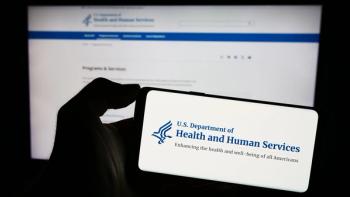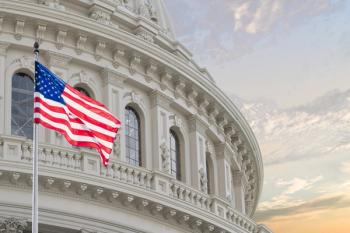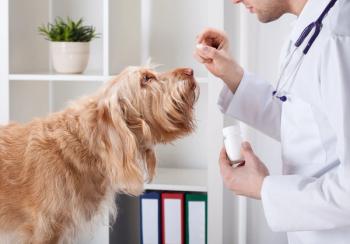
Congress allots $500,000 to ease manpower drought
Washington — Congress has sent the White House a $101-billion agriculture appropriations measure that earmarks funds for several key veterinary initiatives, including $500,000 for the National Veterinary Medical Services Act (NVMSA).
WASHINGTON — Congress has sent the White House a $101-billion agriculture appropriations measure that earmarks funds for several key veterinary initiatives, including $500,000 for the National Veterinary Medical Services Act (NVMSA).
President Bush's signature is all that's needed to enact the spending bill for fiscal year 2006.
Yet as veterinary leaders applaud lawmakers' efforts to turn NVMSA into reality, they're eager to see the pilot program functioning before Sept. 30, which marks the fiscal year's end. NVMSA is designed to spur DVMs to practice in the nation's underserved areas by providing education repayment incentives. With two months of FY 2006 lost to legislative haggling, insiders question the United States Department of Agriculture's (USDA) ability to write and publish the program's regulations, consider comments, take applications and assign recipients before next September.
Uncertain fate
It's unclear where the half-million-dollar provision will end up if no veterinarian beneficiaries are named within the FY 2006 timeframe. While some suggest the $500,000 allotment might roll over as a line item for FY 2007, USDA did not satisfy DVM Newsmagazine's repeated requests for clarification. The Cooperative State Research, Education and Extension Service, a USDA agency, is charged with NVMSA administration, yet its spokespeople claimed to be removed from the rule-making process. At USDA headquarters, media officials were unclear at presstime about what the program entailed.
With all the indecision, Dr. Michael Chaddock, director of the American Veterinary Medical Associations (AVMA) Governmental Relations Division (GRD), wants a seat at the table. Credited with helping drive the original $60 million NVMSA through Congress in 2003, Chaddock understands USDA holds the authority to write the rules. Yet they might need to be "stimulated" to do the work, he says.
"They certainly want our input, and we want to have a real, frank dialogue with them," Chaddock says. "We understand it won't happen overnight, but in the meantime, we want to get this program off the ground. We're looking for ways to start implementing this sooner rather than later."
Spreading the wealth
If all goes as planned, graduates agreeing to work in rural areas for a contracted number of years can apply for federal debt repayment by next fall. The amount of aid offered and number of program recipients depends on how USDA disburses the money, which is far off the $60 million originally passed and even lower than the $750,000 proposed by the Senate earlier this year, Chaddock says.
"I don't know how far $500,000 is going to go," he says. "The goal is to have some veterinarians on the ground by the end of the fiscal year, but if it doesn't happen and the program's moving forward, that's still progress."
Facilities upgrades, BSE focus
Congress wants to see similar advancement at the National Centers for Animal Health in Ames, Iowa, giving the USDA's flagship laboratory for large animal research $58.8 million to complete facilities refurbishing projects.
The complex includes the National Animal Disease Center, National Veterinary Services Laboratories (NVSL) and Center for Veterinary Biologics. Tests at NVSL confirmed the nation's first case of mad cow disease in 2003.
Language in the appropriations measure speaks to Congress' food safety and risk concerns surrounding bovine spongiform encephalopathy (BSE). Lawmakers propose $900,000 for BSE risk assessment research and the implementation of an integrated zoonotic research program in pathogenesis, diagnostics and intervention at Ames, Iowa. Roughly $1.5 million more is slated for further BSE research at veterinary institutions and laboratories across the country.
The Food and Drug Administration (FDA) also received $29.5 million for BSE activities per the appropriations measure. The money is slated to support yearly inspections of all renderers and feed mills processing products containing prohibited materials, extending BSE inspections to targeted industry segments, validating test methods for direction of bovine-derived proteins in animal feed and continuing research on transmissible spongiform encephalopathies in FDA's product centers.
APHIS gets $815 million
Expenses to prevent, control and eradicate pests, plants and animal diseases by USDA's Animal and Plant Health Inspection Service (APHIS) is authorized to cost the federal government more than $815 million, of which $4.1 million is slated for emergency outbreak management.
The measure appropriates $147.5 million for animal health monitoring and surveillance, of which more than $33.3 million will fund the National Animal Identification System (NAIS). Currently in a development phase, the system links state agencies, industry experts and DVMs to a 48-hour trace-back program to identify specific animals in the United States should a disease outbreak strike. Veterinarians are expected to become the producers' guide to becoming federally compliant on animal tracking issues.
Lawmakers address microchips
The nation's ability to track companion animals also receives attention in the appropriations measure. The language reads as an attempt to iron out a product war that's produced incompatible identification systems from competing manufacturers. Because the battling companies sell microchips at different radio frequencies, owners aren't guaranteed all scanners can recognize their chipped pets.
Congress, which dropped previous language authorizing a specific radio frequency for U.S. use, states its support for "open microchip technology in which all scanners can read all chips."
The measure directs APHIS to develop regulations that "allows for universal reading ability and best serve the interest of pet owners."
APHIS also has been asked to consider the effect such regulation might have on the current microchipping practices and instructs the agency to report to the Committee on Appropriations within 90 days from the date of enactment.
Newsletter
From exam room tips to practice management insights, get trusted veterinary news delivered straight to your inbox—subscribe to dvm360.




